Behind closed doors at Moorgate
A few years ago the Hidden London team added a new destination to their roster of fascinating underground tours with Moorgate: Metropolitan Maze. This tour takes in the complex history of one of the oldest stations on the tube network and I eagerly booked up. Unfortunately, the pandemic thwarted my first two attempts to get down into the tunnels but I struck lucky on my third attempt.
Unlike the previous Hidden London tours I have been on, I am very familiar with this station as it is just around the corner from my work and I have taken trains from just about every platform over the past 23 years. You might think this would make it less interesting, but the opposite was true. It was really mind-boggling to see the tour take us through doorways I have barely noticed as I passed by.
Moorgate Station opened in 1865, just a couple of years after the opening of the Metropolitan Railway, the world’s first underground railway. It was an important extension of the existing line, providing a much needed gateway to the city, the financial heart of London.
Over time further lines were added – the city widened lines brought the mainline railway to Moorgate from King’s Cross; the City & South London Railway brought a deep tube line up from Borough; and the Great Northern &
City Railway opened a line from Finsbury Park to Moorgate. The most recent addition has been the Elizabeth Line, connecting Moorgate with Heathrow, Reading and Abbey Wood.
It’s a tough ask to run through all that history in 75 minutes, but the Hidden London team do a brilliant job of condensing that down, while throwing in enough interesting detail to keep you interested throughout. After a walk through the earliest phases of the station’s history, it was time to start exploring beyond the everyday sights of Moorgate station.
First up, we headed down the staircase to the deep-level Northern City Line platforms, through a doorway, and into a corridor that used to connect up with the lift shaft until it was closed in the 1930s (with a switch to escalators as passenger numbers grew). This proved to be a fascinating time capsule with signage from its time in passenger use, evidence of its reuse as a dormitory during WW2 and some amusing modern graffiti.
Our next stop took us into the pedestrian tunnel between platforms for the Metropolitan Line, then through an unexceptional doorway into another dirty but wondrous abandoned tunnel. This one still had the remains of 1930s posters plastered on the walls, so it feels even more of a time capsule. It’s not entirely redundant though, as it’s used for ventilation pipes. From here we were led out to a viewpoint at the end of the deep railway lines where a Greathead tunnelling shield can be seen, left in situ when work to extend the line further south to Lothbury was abandoned in 1904. It’s fascinating to see such a long lasting industrial relic and reminder of just how our underground system was built.
Finally, we headed over to the city widened lines for a look down the tracks, before resurfacing in the shiny new concourse built as part of the Elizabeth Line works. I’ve had a chance to try the new line on a few occasions now and am still marvelling over what a difference it makes. It doesn’t seem all that long ago that I was peering down at the works around the massive hole when you could still take in the view from the Barbican walkways.
Time was up all too soon. It was fun stepping from the gleaming white tiles of the revamped station into the extremely dirty abandoned passenger tunnels and taking a peek into history. Moorgate is a fascinating station to explore and the Hidden London tours do a fabulous job of bringing all that history to life. Thank you to everyone involved in making this tour possible.
Gallery



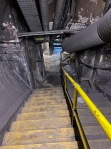


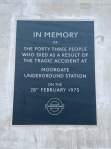
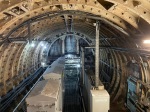

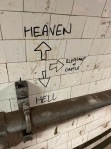
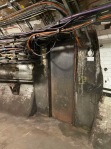
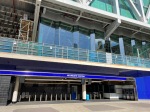
leave a comment